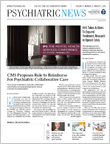In a policy adopted at its annual meeting in June, the AMA called on the nation’s school districts to start middle and high school classes at 8:30 a.m. or later to optimize students’ sleep, mood, health, safety, and learning opportunities.
The AMA policy affirms the American Academy of Pediatrics’ landmark 2014 school start time recommendation, endorsed by the Centers for Disease Control and Prevention (CDC) and other medical organizations.
The proposed start time, roughly 30 to 60 minutes later than most schools start now, acknowledges a pubertal delay in the biological clock that thwarts teens’ attempts to fall asleep before 11 p.m. Most teenagers need 8.5 to 9.5 hours of sleep each night to achieve optimal alertness, which may be hard to achieve with early school start times.
“We believe delaying school start times will help ensure that middle and high school students get enough sleep and that it will improve the overall mental and physical health of our nation’s young people,” AMA board member William E. Kobler, M.D., said in announcing the AMA policy.
Anne Wheaton, Ph.D., an epidemiologist in the CDC’s Division of Population Health, and colleagues recently reviewed 38 reports examining the association between school start times, sleep, and other health measures in adolescents.
Later school start times allow teenagers to sleep longer on week nights, mainly by delaying morning rise times, the researchers reported in the Journal of School Health in May.
Most studies showed that when school started later, attendance improved, tardiness fell, fewer students fell asleep in class, grades rose, motor vehicle crashes declined, and self-reported symptoms of depression dropped.
Wheaton and other CDC colleagues also reported recently that too little or too much sleep may put teenagers at increased risk of injuries while driving, riding in cars with others, and biking.
Injuries from motor vehicle crashes are the leading cause of death in U.S. adolescents. In 2013, 2,163 U.S. teens aged 16 to 19 years died in motor vehicle crashes, and 243,243 received treatment in emergency departments for motor vehicle crash injuries, according to the CDC.
Wheaton’s group analyzed data provided by 50,370 teenagers, a nationally representative sample of U.S. high school students in grades 9 to 12. The students had participated in the CDC’s national Youth Risk Behavior Surveys in 2007, 2009, 2011, or 2013, completing an anonymous self-administered questionnaire in a single class period.
Teenagers who usually sleep less than seven—or more than 10—hours on school nights are more likely than peers who sleep nine hours to drink and drive, text while driving, and engage in other behaviors that boost risks of motor vehicle and other traffic injuries, the researchers wrote in the April 8 Morbidity and Mortality Weekly Report.
More than two-thirds of the students reported sleeping seven hours or less on school nights, while about 2 percent said they usually slept 10 hours or longer. Only 6 percent reported averaging nine hours of sleep.
Nine percent of the students said they had driven a car or other vehicle when they had been drinking alcohol, and 30 percent said they had texted or emailed while driving at least once in the past month.
Nine percent reported infrequently wearing a seatbelt when riding in a car driven by someone else. Twenty-six percent reported riding in a car or other vehicle with a driver who had been drinking alcohol at least once in the previous 30 days. Among students who reported riding a bicycle in the previous year, 86 percent said they rarely wore a bicycle helmet.
Prevalence of all five injury-related risk behaviors varied by sleep duration, the researchers found. Students who slept seven hours or less on average on school nights were more apt to report all five behaviors than those who slept nine hours.
Students who slept 10 hours or longer were more apt than those who averaged nine hours to report infrequent seatbelt use, riding with a drinking driver, and drinking and driving.
“Adolescents’ brains aren’t geared to thinking through consequences of their actions,” Wheaton told Psychiatric News. Not getting enough sleep may make teenagers more likely to take risks, she said, and less likely to reflect on possible outcomes before they act. Overlong sleep, she said, a common symptom of depression, also may alter judgment.
One limitation to the data used in this study, Wheaton cautioned, is that the data are cross-sectional. While the researchers found shorter sleep associated with a higher prevalence of risk behaviors, they could not determine causality. ■
An abstract of “School Start Times, Sleep, Behavioral, Health, and Academic Outcomes: A Review of the Literature” can be accessed
here. “Sleep Duration and Injury-Related Risk Behaviors Among High School Students—United States, 2007–2013” is available
here.

